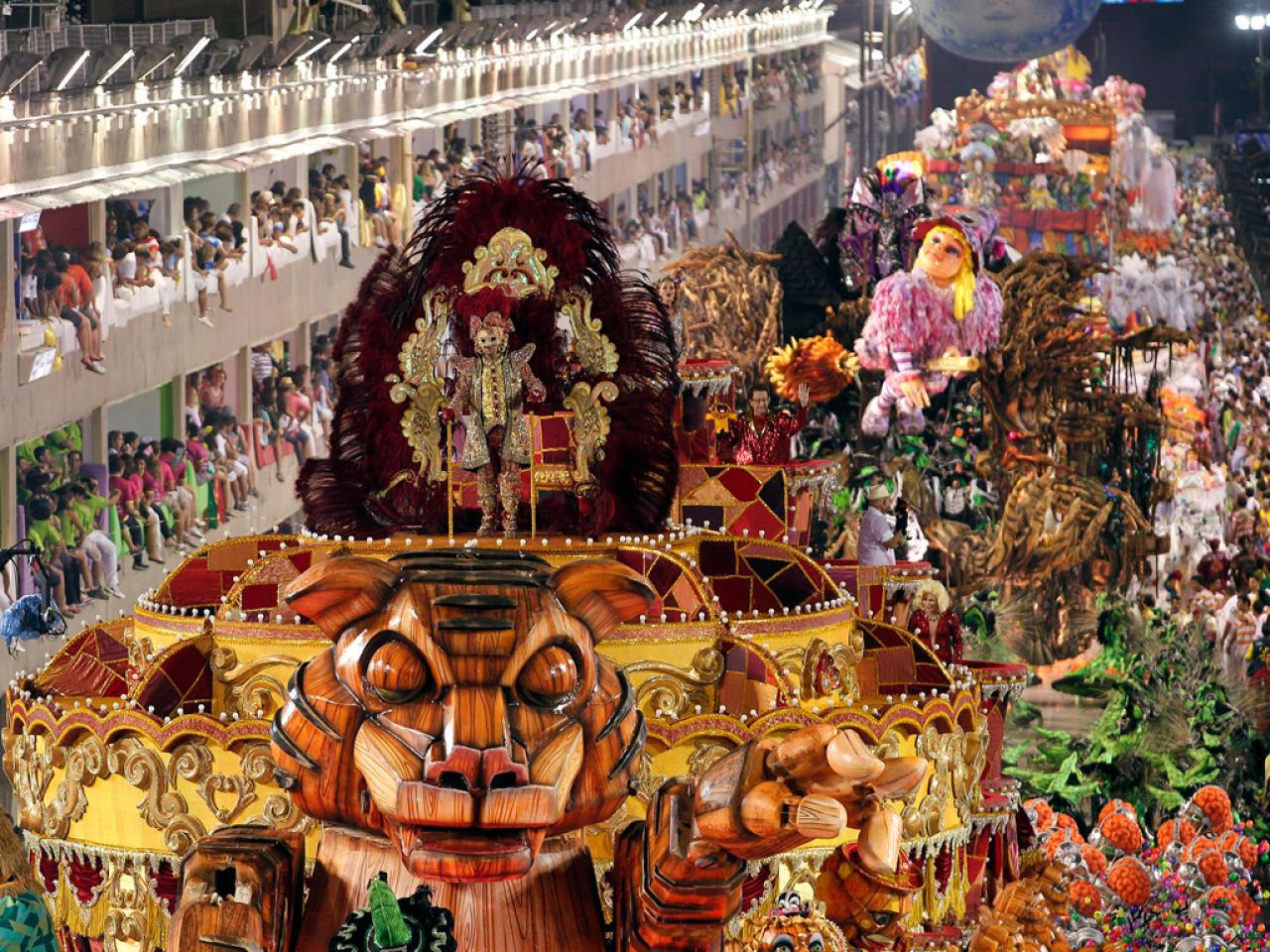On the beautiful shores of the Pacific Ocean, in South America’s largest country, lies the city of Rio de Janeiro. Founded as “Sebastião do Rio de Janeiro” in 1565 to honor Saint Sebastian, Rio de Janeiro (or simply “Rio”) now sits as one of Brazil’s most famous cities. Known for stunning beaches, massive forests, and top-notch parties, Rio is a city that is certainly worth visiting.
One of the most famous attractions in Rio is the Christ the Redeemer statue, located 2,300 feet above the city on Corcovado Mountain. The statue stands 98 feet tall, with a wingspan that is nearly just as wide. It is so massive, that it took nine years in the early twentieth century to construct. Since 2007, Christ the Redeemer has been one of the seven wonders of the world. Today, visitors can see the statue from all across the city, however those who want to see it up-close can reach the base of the statue by tram.
 It would be silly to travel all the way to Brazil without going to the beach. Rio’s Copacabana Beach is not only one of the most famous beaches in Brazil, but it is one of the most well-known in the world. Those who watched the 2016 Summer Olympics may recognize this Copacabana, for it was the site for the beach volleyball games. Those who make it to Copacabana are encouraged to not only spend time in the water and the sand, but to see all that it has to offer. Fort Copacabana and Fort Duque de Caxias lie at both ends of the beach. These historic structures were built in 1914 and 1779 respectively.
It would be silly to travel all the way to Brazil without going to the beach. Rio’s Copacabana Beach is not only one of the most famous beaches in Brazil, but it is one of the most well-known in the world. Those who watched the 2016 Summer Olympics may recognize this Copacabana, for it was the site for the beach volleyball games. Those who make it to Copacabana are encouraged to not only spend time in the water and the sand, but to see all that it has to offer. Fort Copacabana and Fort Duque de Caxias lie at both ends of the beach. These historic structures were built in 1914 and 1779 respectively.
While it may not be as glamorous or advertised as Copacabana, many suggest taking a tour of one of Rio’s favelas. Favelas are neighborhoods full of people with very little money. Some of the biggest favelas in the world are located in Rio de Janeiro. The stereotype is that these areas are unsafe and full of crime, and while this is certainly at least partially true, certain organizations strive to show tourists that there is more than just poverty and danger in the favelas. Organized tours are offered that show off how the art, agriculture, business, and education that occurs in these favelas.
Not too far from the favelas, many of the the wealthy people in Rio reside in Botafogo. This neighborhood sits along the Guanabara Bay and features beaches that are known to be more peaceful than Copacabana. Botafogo also is home to some of the greatest museums and restaurants in the city. One of Brazil’s best soccer teams, Botafogo de Futebol e Regatas, is based in this part of the city. If visiting at the right time, their home games at Estádio Olímpico Nilton Santos are known to be thrilling.
 The best time to visit Rio de Janeiro is the week leading up to Ash Wednesday, when the annual Carnival (or “Carnaval” in Portugueses) takes place. This event is often considered the world’s best festival, for the city is filled with dancing, music, and great food. The Samba Parade is considered by most to be the highlight of the event, where an estimated two million people fill the streets to see the massive floats. While the demand for hotel rooms and flights during Carnival certainly make this one of the more expensive times to visit, an event like this can be experienced nowhere else.
The best time to visit Rio de Janeiro is the week leading up to Ash Wednesday, when the annual Carnival (or “Carnaval” in Portugueses) takes place. This event is often considered the world’s best festival, for the city is filled with dancing, music, and great food. The Samba Parade is considered by most to be the highlight of the event, where an estimated two million people fill the streets to see the massive floats. While the demand for hotel rooms and flights during Carnival certainly make this one of the more expensive times to visit, an event like this can be experienced nowhere else.
From humongous statues to gorgeous beaches, Rio de Janeiro, Brazil is a great vacation destination that will not disappoint.
